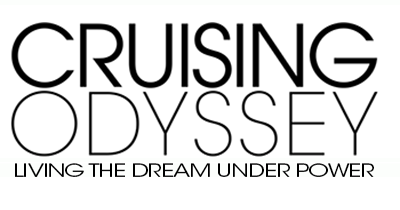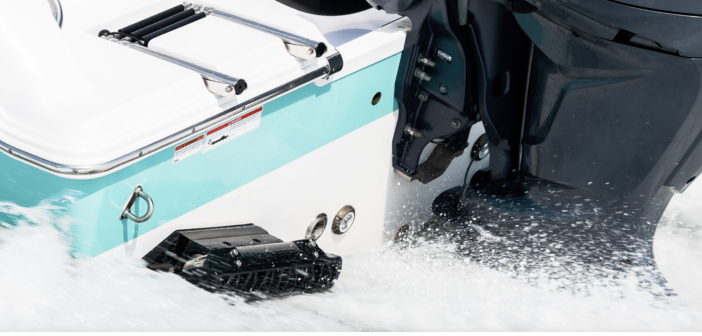Last Friday, during the Ft. Lauderdale boat show, I had the opportunity to go out on a 37-foot center console powered by twin Mercury Verado 300-horsepower engines. The boat was equipped the Seakeeper’s new Ride stabilizers, and we were going to put the system to a test in some bouncy water.
Seakeeper is well-known for their gyro boat stabilizers that have become increasing popular in the cruising fleet. The gyro systems use heavy flywheels spinning around an axis to create the stabilizing force to hold the boat level, much the way a spinning top is hard to reorient due to its centrifugal force.
But gyro stabilizers effectiveness decreases as boat speed increases and has proven most useful at slower speeds or when anchored or moored. It is amazing in these scenarios just how much the gyro reduces roll and pitch.
But, I learned during our test that the gyro systems came into being after the company’s founders and engineers could not make their initial concept work. They tried to create trim-tabs that attach to a boat’s transom that can make rapid adjustments to counteract pitch, roll and yaw.
At the time, the technology was not there to make the concept work. But that was yesterday. Today, the RIDE trim-tab concept is in full operational mode and our tests proved it.
We motored the center console to the Port Everglades Cut, which can be a nasty piece of water when the easterly trade winds are blowing against an ebbing tide. Short square waves and crossing seas make a boat corkscrew like mad as it pitches into the waves, rolls in the cross seas and yaws as waves roll against the bow.
Jason, our skipper, motored past the No Wake sign and pushed the throttles forward, snapping our heads back. With the Ride tabs engaged, the center console rose up onto a plane, leveled off with the bow level instead of raised and we skipped through the maelstrom as though we were on rails.
The boat didn’t pound on the square waves, didn’t roll as cross seas hit us and didn’t yaw from wave pressure. We made a couple of large circles to test how the system performed at all angles with the same results.
Then, Jason turned off the Ride system and made the same maneuvers. The four of us on the boat could barely hold ourselves in place. The difference was dramatic. And, we were all happy when Jason switched the Ride system back on again.
The RIDE systems are based on a box with multiple position sensors that collects 1,000 data bits a second and then sends that information to the actuators on the trim tabs. The tabs, which are wing-shaped, make 100 corrections a second to correct the boat’s position and keep it level and going straight.
Unlike the gyro systems, the Ride doesn’t work well when stationary or at slow speeds. Instead, it becomes effective at 15 knots or so and is best on planing hulls. Interestingly, the Ride tabs generate so much torque that they have to be attached to the boat with high strength adhesives, such a Plexus. Mechanical fasters won’t stand up to the forces at play.
As of this year, the Ride systems can be installed on boats with flat transoms from 18 to 42 feet. The smallest units retail for $4,500 while the largest cost $20,500, before installation.
Seakeeper has a reputation as a game changer in marine stabilization and the Ride system is nothing short of revolutionary. Read more here.




